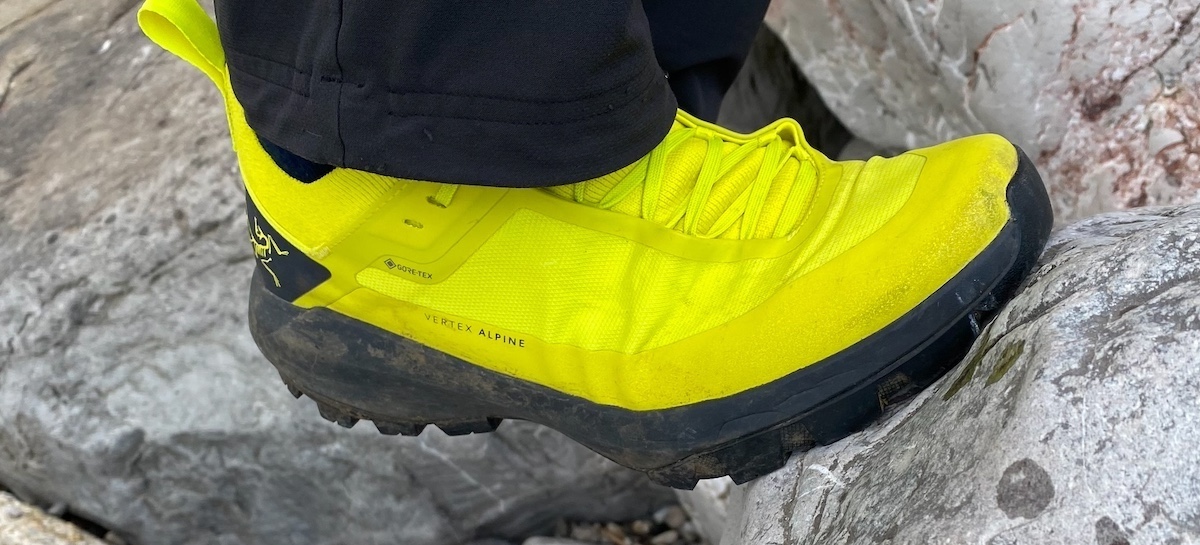
Meet the reviewer
Arc’teryx Vertex Alpine GTX: first impressions
My initial reaction when unboxing my Arc’teryx Vertex Alpine GTX approach shoes was to reach for my best sunglasses, because the ‘Euphoria & Graphite’ color scheme of my test pair is bright enough to sear the surface of your retinas. It also made me wince a little bit, since I knew was going to feel a tad self-conscious hitting the trails and crags in these loud loafers.
• List price: $250 (US) / £220 (UK)
• Gender availability: Men’s & women’s versions available
• Weight (per shoe): 336g / 12oz
• Materials: Synthetic knit upper made with Cordura recycled PES; a TPU shank & toe cap; Gore-Tex membrane; EVA & Polyolefin blended midsole; Vibram XS Flash 2 outsole
• Colors: Solitude & Graphite / Euphoria & Graphite / Black / Black Sapphire / Tatsu & Edziza
• Compatibility: Approach routes, scrambling, alpine climbing & technical hill hiking
However, I should stress that these approach shoes from Arc’teryx are available in several other, far less attention-seeking colorways, and, as is always the case with this classy Canadian brand, the overall design and look is super stylish and sleek.
When it came to taking them on their maiden outing, it took some pulling to get these shoes on my feet, thanks to the tight-fitting integrated sock inner. This isn’t a criticism, per se, because – as I describe in more detail below – this design serves several excellent purposes, but it is something to be aware of. If you like a shoe that’s quick and easy to get on, look elsewhere.
But, if you’re seeking an approach shoe that protects your feet and toes perfectly from the elements and tough technical terrain, and offers a good balance between performance-related rigidity and comfort, then read on, because I have been trail and crag-testing the Vertex Alpine GTXs to see how they perform in comparison to the best approach shoes currently on the market.
Arc’teryx Vertex Alpine GTX: design and construction
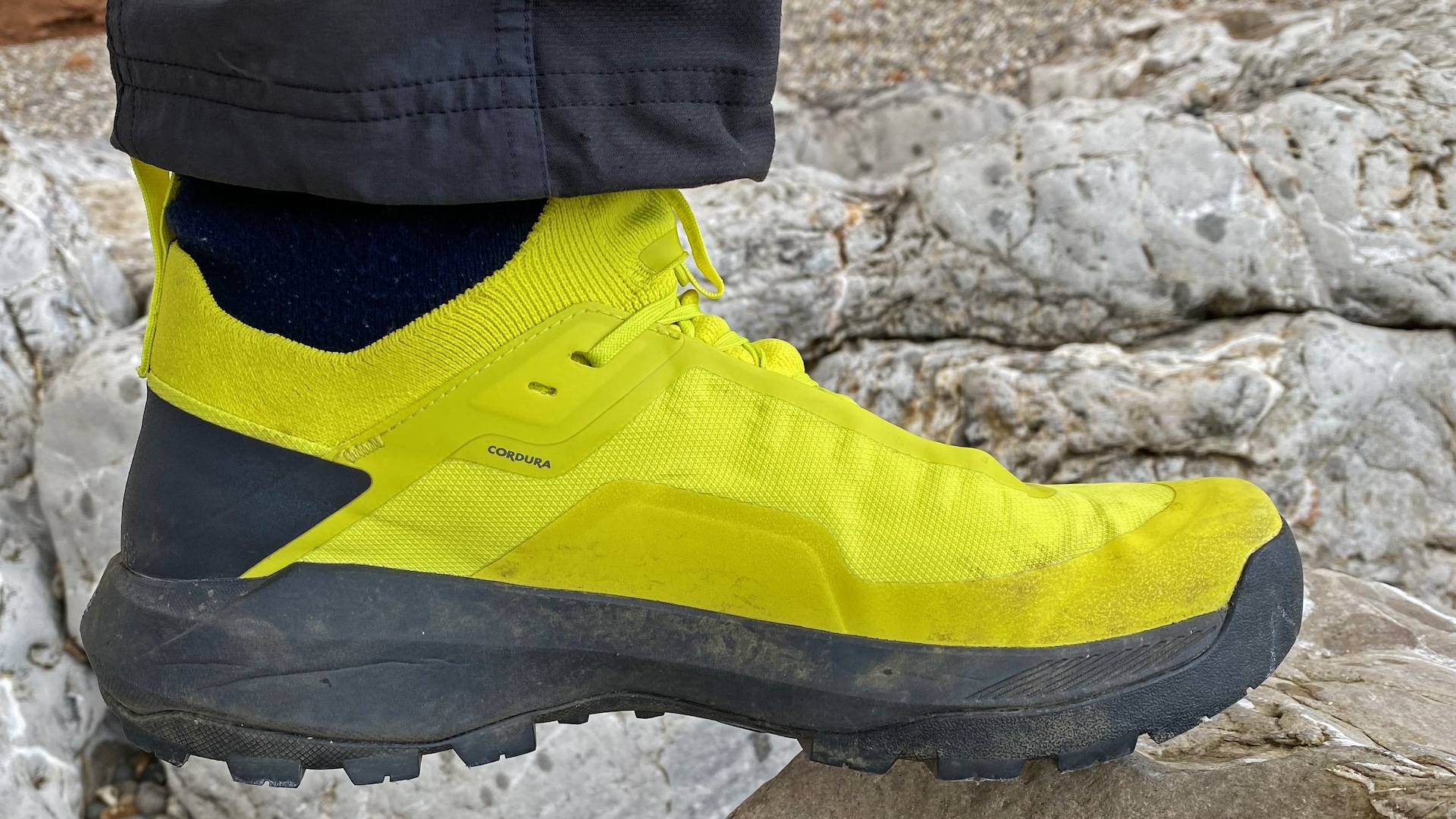
The Arc’teryx Vertex Alpine GTX features a Cortura chassis constructed from recycled PET bottles, reinforced with TPU overlays, which form a rand that goes almost completely around each shoe, to protect the wearer’s foot from sharp rocks and other hazards. There’s a small toecap too, and the heel is cushioned by a midsole buffer that extends slightly beyond the natural range of the foot.
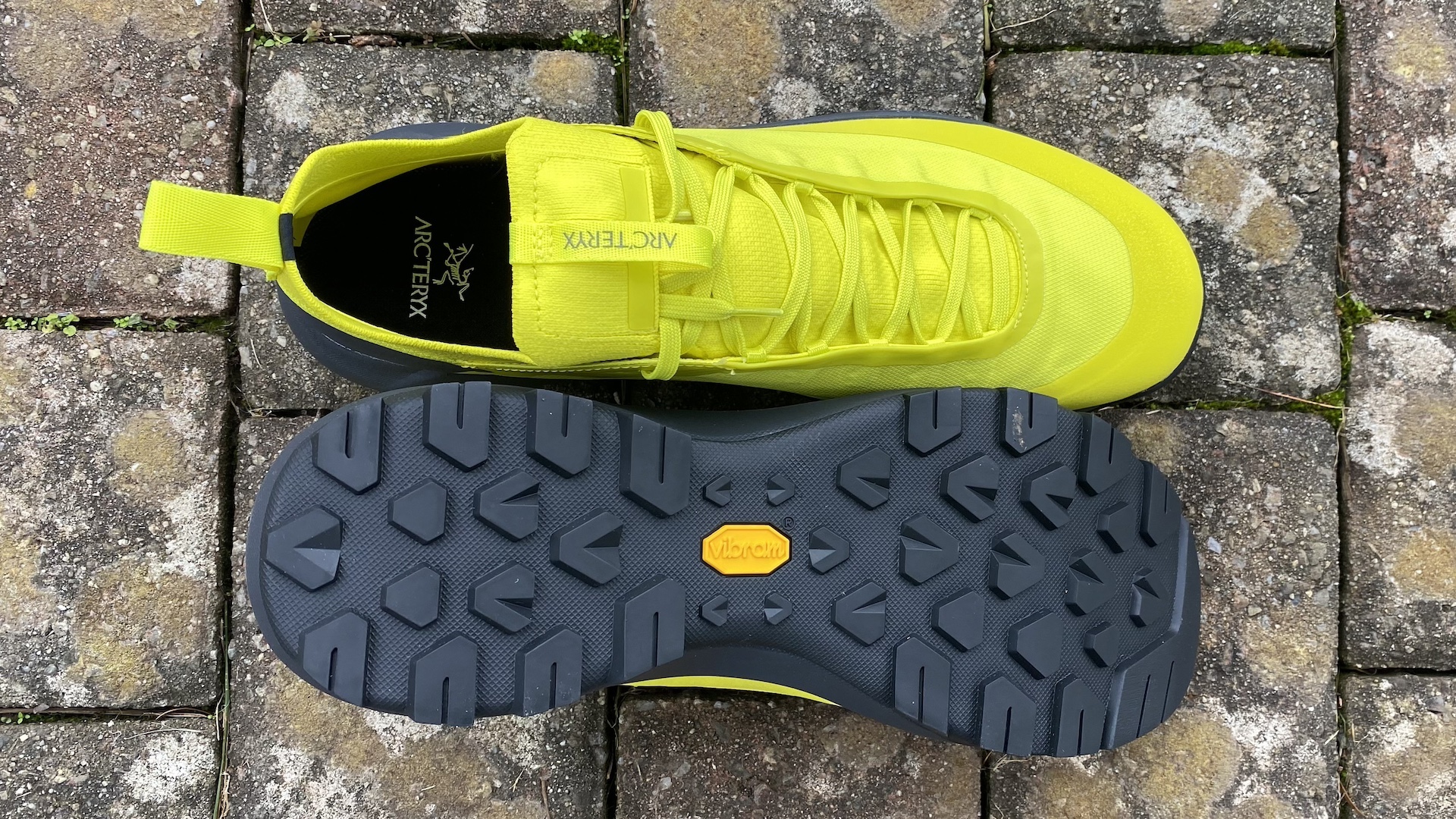
One of the defining features of this shoe is the integrated, stretchy sock inner, which replaces a traditional tongue but also extends right around the top of the heel to hug the whole foot, just below the ankle. There’s a fabric pull hook on the top of the heel (which is very much required when squeezing your foot into this shoe) and small pocket to tuck the tied laces into, positioned on top of the sock.
The whole upper is lined with a Gore-Tex membrane, to provide breathable waterproof protection from the soggy elements, such as rain, sleet and snow.
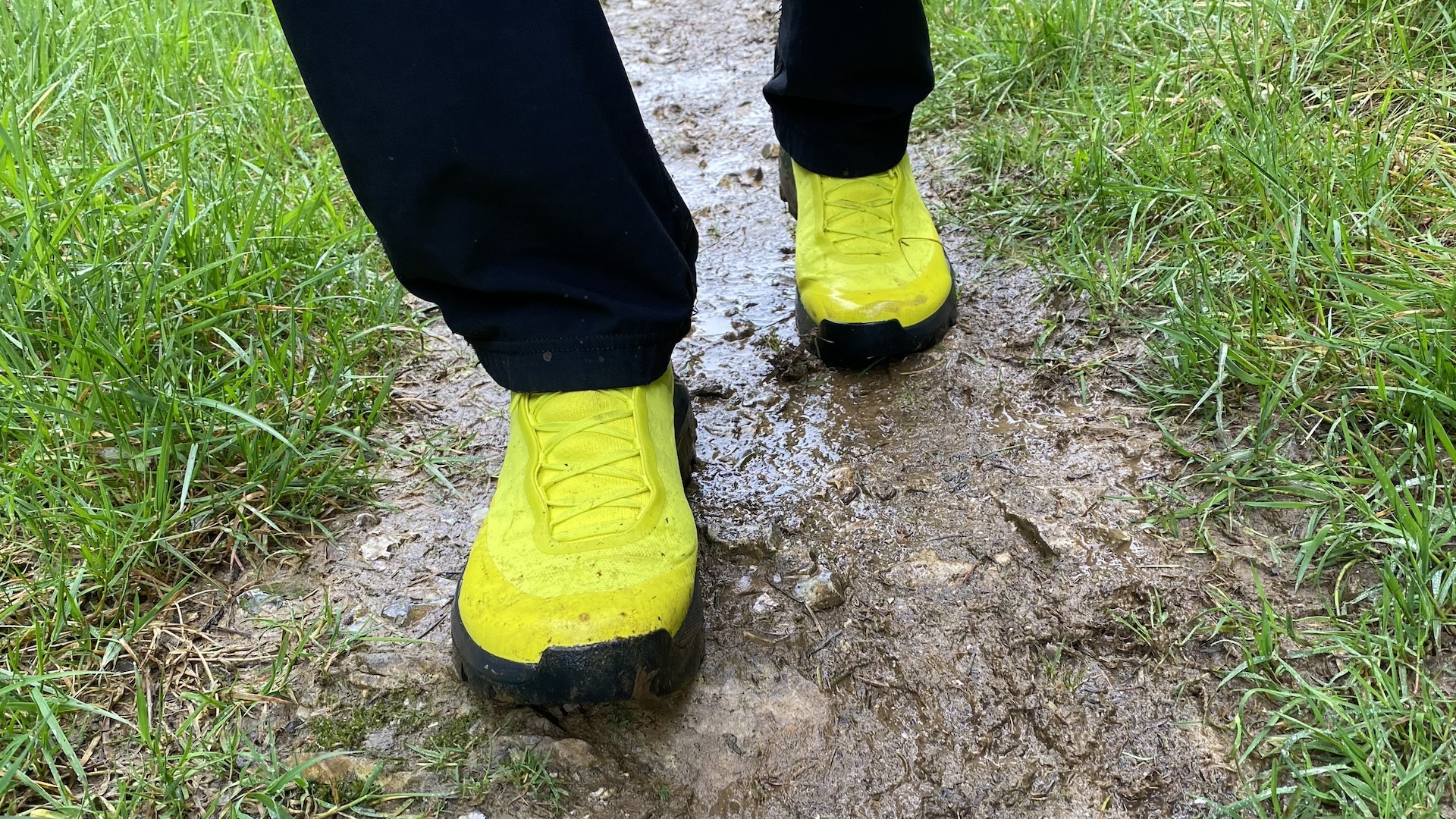
The midsole is made from a durable combination of EVA and polyolefin, and embedded within this material mix is a TPU shank that provides a good degree of stiffness across the length of the shoe (and acts as a rockplate too). There’s an 8mm drop on the Vertex Alpine GTX, which has a stack height of 18mm at the heel and 10mm at the toe.
Arc’teryx have worked with Vibram on this approach shoe, and the XS Flash 2 outsole is armed with strategically positioned 4mm lugs, designed to supply both traction and control when required on technical terrain.
Arc’teryx Vertex Alpine GTX: in the hills
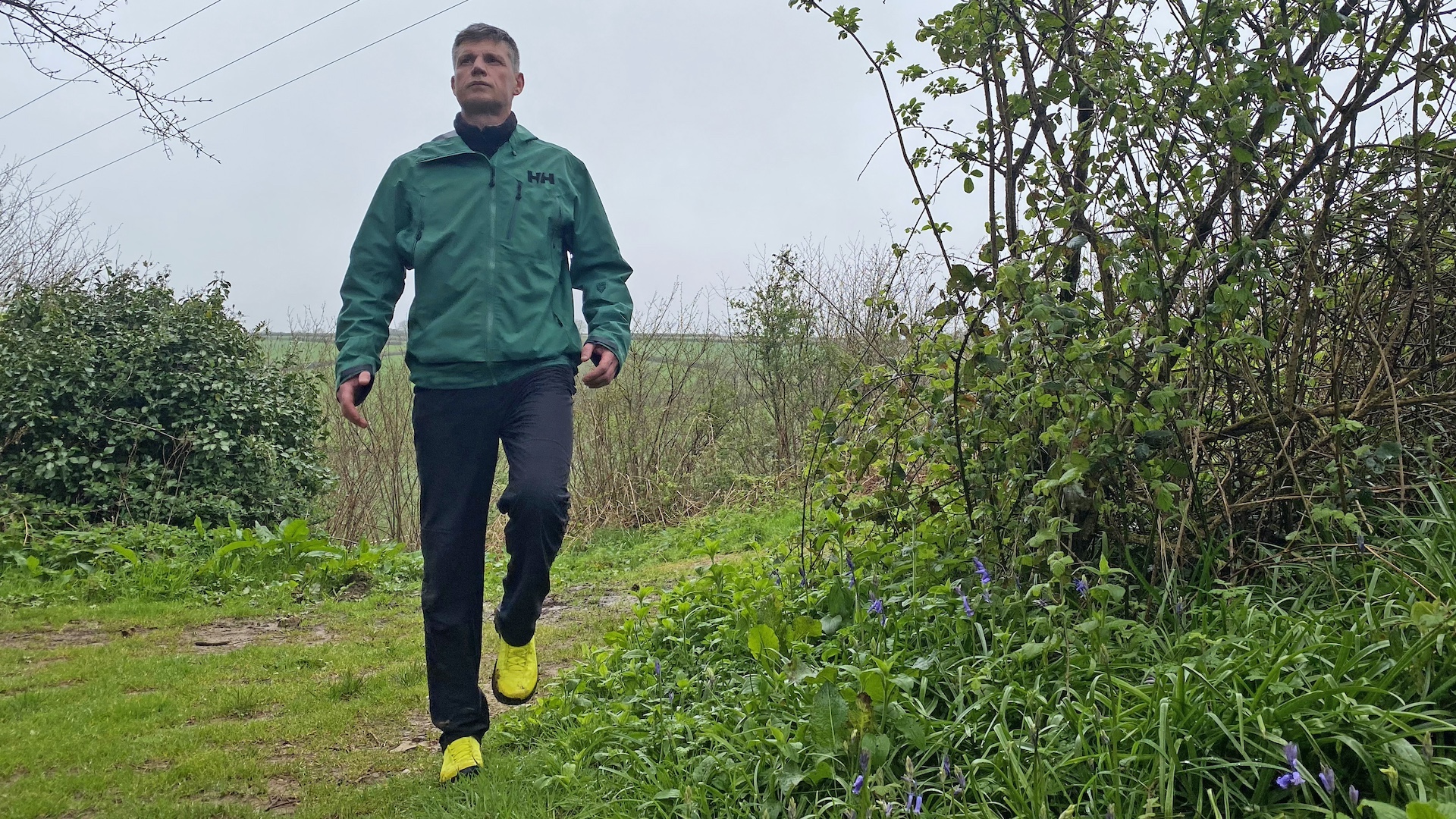
I have been putting my Arc’teryx Vertex Alpine GTX approach shoes through their paces on technical hillside trails and crags in a mixture of conditions over the last month.
This is a new product for Arc’teryx, but as a brand built on a solid climbing heritage their design department obviously fully understands what’s required in an approach shoe, and where exactly it’s important to diverge from the features offered by a hiking shoe or, indeed a trail running shoe. (Interestingly, the marketing blurb references the Vertex Alpine GTX sharing some DNA with trail running shoes, but I certainly wouldn’t go out running in them, precisely because they are well-designed for approach requirements, which makes them far too heavy and stiff for running.)
To start with these attributes, there is a very reassuring degree of rigidity across the length of these shoes, which makes them perfect for tackling scrambling routes and edging around rocks during peak ascents or while engaged in technical approach adventures.
The midsole is supportive and robust, and it provides the right amount of cushioning to keep long approach hikes comfortable without being spongy and energy sapping, or negating the stiffness in the shank.
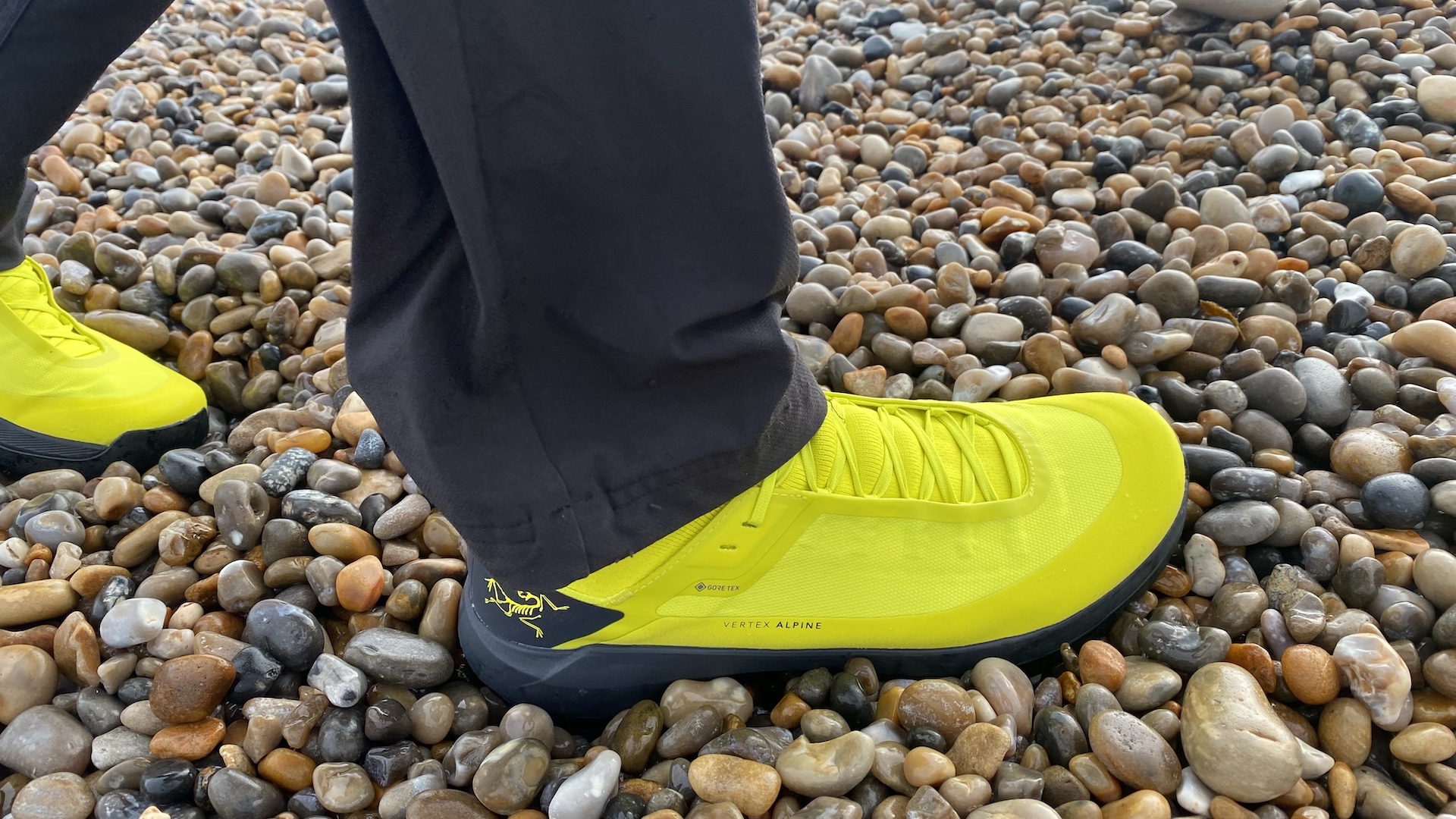
The heel bumper and toecap are also good, even though the latter is perhaps a little on the small size. You can still definitely kick and stomp snow steps without damaging your pinkies.
The outsole is very grippy on a range of rock types and other surfaces, and across various conditions, including in the wet. The lugs aren’t overly aggressive, and because they’re not intended for use on soft muddy surfaces, they don’t need to be. Instead the chevrons are shaped and positioned to provide grip and traction on rocks and rubble on the way up, and confidence and control during descents. I did find that the sole pattern collected some mud when I got lower down, but again, that’s because the focus is firmly on providing performance up above the treeline, where conditions are less gloopy.
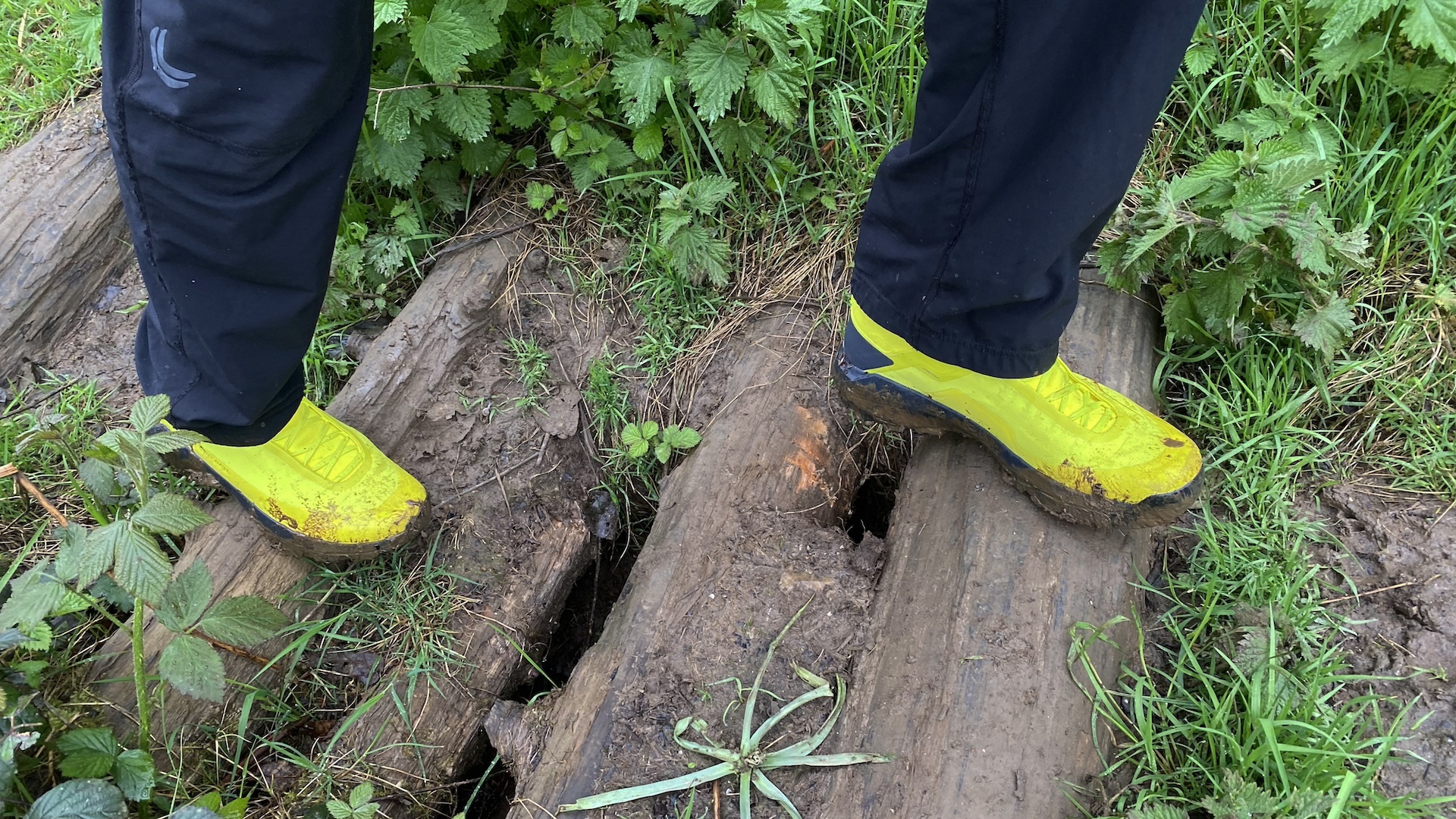
Up on top, the Gore-Tex membrane incorporated in the chassis does its job exactly as you would expect it to, keeping rain, snow and sleet on the outside so you can tackle technical terrain with dry socks and warm feet. It is breathable, so far as any waterproof footwear is, but the integrated sock does mean these shoes run quite warm, and can get pretty sweaty in hot weather. I really like the lace pocket on top of the sock, which keeps things nice and clean, with no loose ends flapping around, and reduces the likelihood you’ll need to pause to retie laces.
The integrated knit sock itself is a love-it-or-hate-it feature. On the one hand (sorry, foot) it is fantastic for preventing the ingress of grit, scree, pebbles, ice and everything else that will irritate you terribly if it gets into the shoe. And it helps with thermal protection, as well as improving the waterproof performance of the Vertex Alpine GTX. Plus it provides a tangible degree of support and confidence, enhancing the hold and reducing foot movement within the shoe.
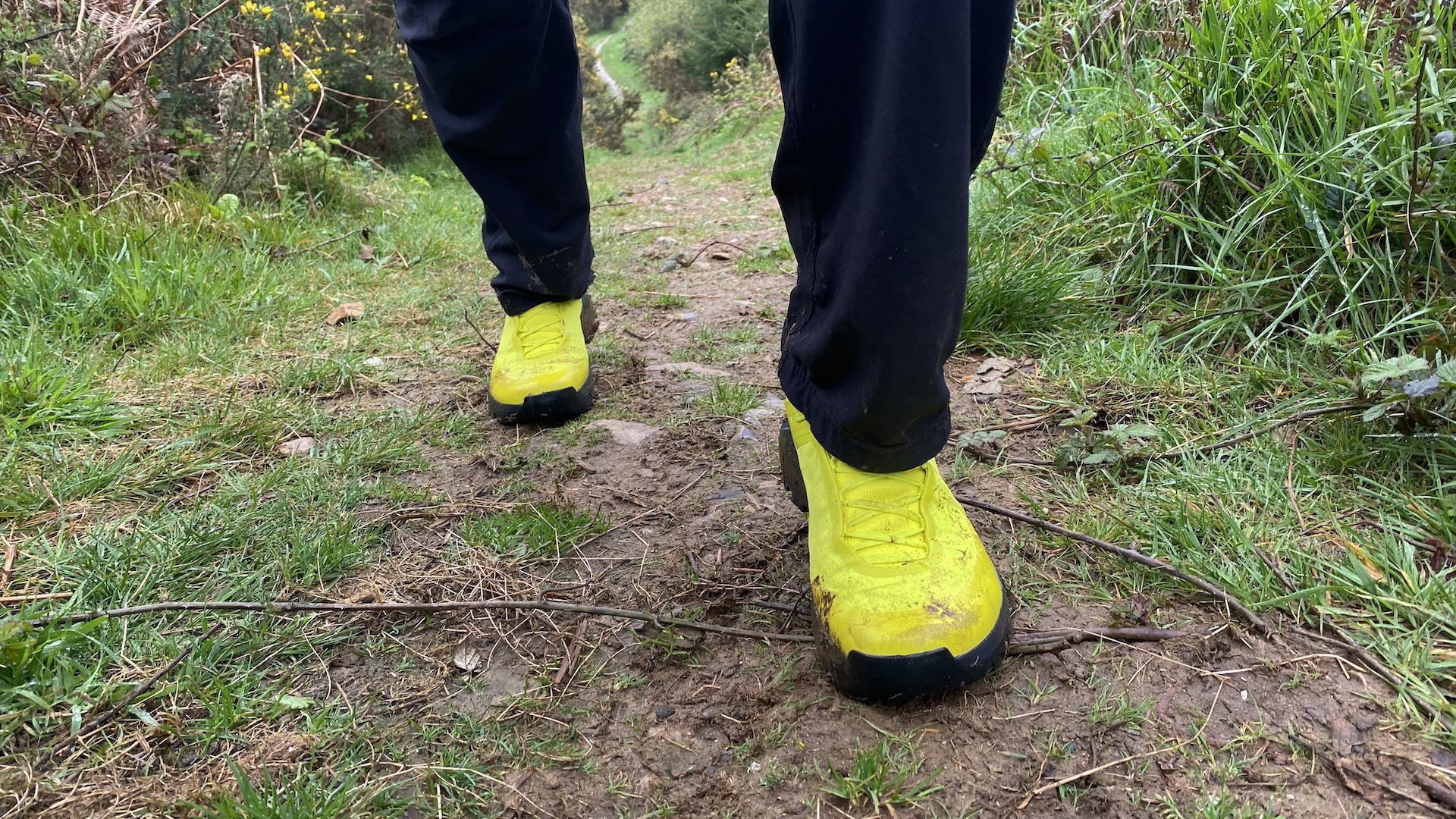
However, precisely because it is so good at gripping your foot once it’s in the shoe, this sock makes it annoyingly awkward, time-consuming and energy-sapping to get the Vertex Alpine GTX on in the first place. Without the pull hoop at the back it would be virtually impossible, and I do wonder whether the pressure that needs to be exerted on this feature could potentially lead to damage or failure over time (although, I should add that the build quality seems really solid, and there’s no indication of wear and tear at the moment). I suspect that the knit will become slightly more forgiving over time too, getting a little bit looser with repeat usage.
As mentioned, the sock also makes these shoes quite warm to wear – which is great in alpine environments for most of the year, but can lead to sweatiness in summer and at lower altitudes.
I did find the whole fit a bit tight – not just in terms of the sock inner, which of course is designed to be close-fitting, but also in the chassis itself, especially across the top of the foot and in the toe box. If you have wide feet, and especially if you suffer with bunions, then you will struggle with these shoes.







